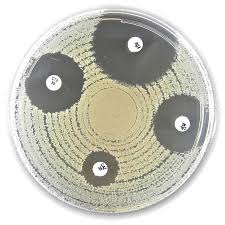Liofilchem ESBL disc kit (acc. to EUCAST) 50 tests
Catalog No :
CAS Number :
Brand :
In Stock
Disc tests for confirmation of ESBL-producing Enterobacteriaceae
Specifications:
| Application | Clinical microbiology |
| Storage Temperature | -20°C |
| Product Type | Antibiotic Disc |
| Product Brand | Liofilchem |
| Product Grade | Microbiology grade |
The Liofilchem® ESBL Disc Kit is designed for the phenotypic confirmation of Extended-Spectrum β-Lactamase (ESBL)-producing Enterobacteriaceae, in accordance with EUCAST standards. Below are the details of the kit's components and references.
Kit Components
- Disc Types:
- Cefotaxime (CTX) 30 µg: Indicator cephalosporin.
- Cefotaxime + Clavulanic Acid (CTL) 40 µg (30 + 10 µg): For detecting synergy with clavulanic acid.
- Ceftazidime (CAZ) 30 µg: Indicator cephalosporin.
- Ceftazidime + Clavulanic Acid (CAL) 40 µg (30 + 10 µg): Detecting synergy.
- Cefepime (FEP) 30 µg: For organisms with suspected AmpC activity.
- Cefepime + Clavulanic Acid (FEL) 40 µg (30 + 10 µg): Detects synergy in AmpC producers.
- Packaging:
- Cartridges with 6 x 50 discs each, packaged in blisters with a desiccant to ensure stability.
- Storage Instructions:
- Store at -20°C to +8°C.
- Open cartridges at room temperature to avoid condensation.
- Unused discs should be returned to 2-8°C and used within 7 days.
Testing Principle
- Combination Disc Test (CDT):
- Tests the inhibitory synergy of clavulanic acid with cefotaxime, ceftazidime, or cefepime.
- A positive result is indicated by an ≥ 5 mm increase in inhibition zone diameter for the cephalosporin when combined with clavulanic acid.
Quality Control
- Positive Controls:
- Klebsiella pneumoniae ATCC® 700603 (SHV-18 ESBL producer).
- Escherichia coli NCTC 13353 (CTX-M-15 ESBL producer).
- Negative Control:
- Escherichia coli ATCC® 25922.
References
- EUCAST Technical Guidance (2019): "New disk potencies for combination disks containing cefotaxime and ceftazidime with and without clavulanic acid."
- EUCAST Guidelines (Version 2.0, 2017): "Detection of resistance mechanisms and specific resistances of clinical and/or epidemiological importance."




 0
0
